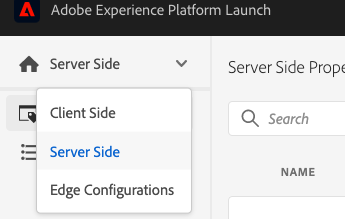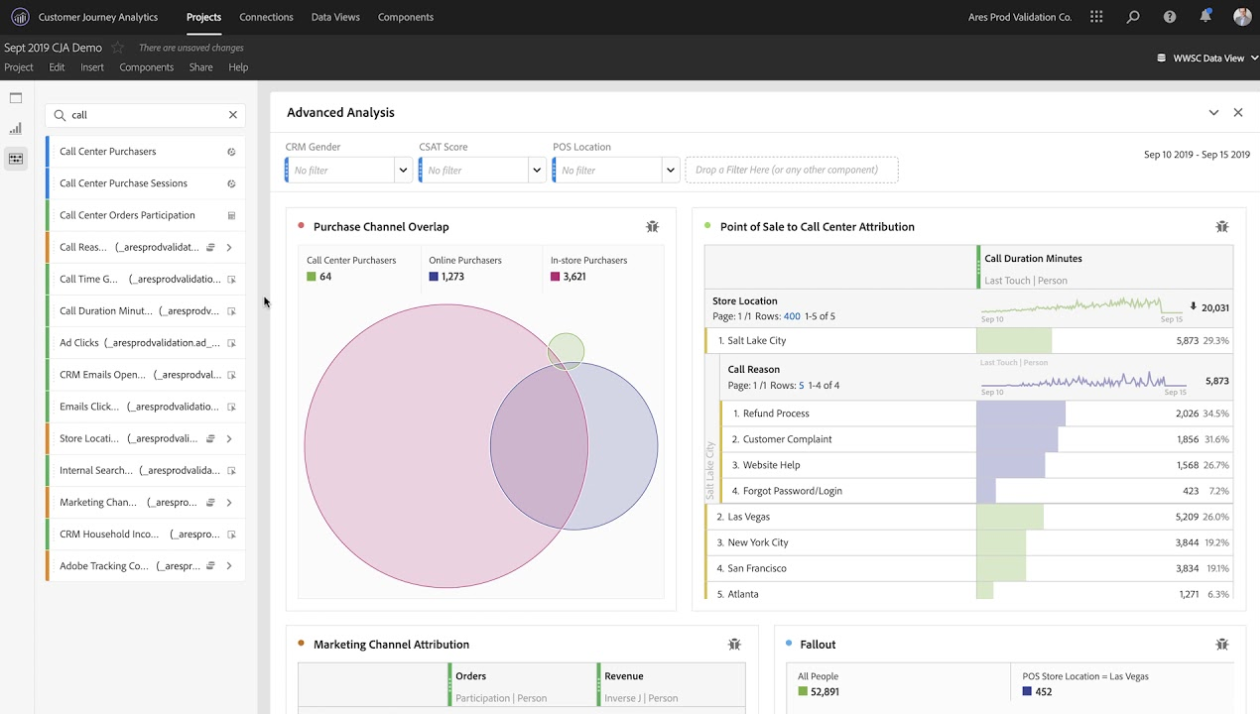08 April 2021
Adobe Experience Cloud: What to expect in 2021

Over the last few years, Adobe has announced a series of important changes and releases to its product mix under Adobe Experience Cloud. Even though new features were introduced, many customers did not adopt or trial them due to the nature of 2020. However, 2021 has brought a renewed and revitalised outlook as businesses prepare for the future and aim to innovate. So, we thought we would catch you up on a few things you may have missed last year.
If you are an Adobe customer, here are the four key Adobe Experience Cloud updates that you need to consider now.
1 . Adobe Experience Platform Web SDK (Alloy.js)
If you regularly use or are responsible for implementing Adobe Experience Cloud, you would be aware of all the different JavaScript libraries required for Adobe Analytics, Adobe Target, Audience Manager or Experience Cloud ID Services - AppMeasurement.js, mbox.js, at.js, DIL.js, Visitor.js.
In an effort to simplify this process, Adobe released the new Adobe Experience Platform (AEP) Web SDK (Alloy.js), replacing the entire library with one that supports all products. This means that you can use a single JavaScript tracking library to run Adobe Analytics, Adobe Target, Adobe Audience Manager and Adobe Experience Cloud ID Service. One library and beacon is sent to a single end-point, then mapped and sent to all your Adobe and potentially non-Adobe solutions via server-side.

Visual representation of how Alloy.js and the AEP Edge Network work presented at Adobe Summit 2020
However, it is important to understand that the Web SDK is not “server-side tag management”. It is still a JavaScript library that will be implemented across all the pages on your site and usually delivered by client-side tag management. Keep in mind that Adobe is also offering a server-side version of Adobe Launch, more on that later.
What are the benefits?
-
Available to all Adobe clients, not just AEP licensees
-
Allows a single type of request to collect data across all Adobe products. It’s also more efficient, with Adobe claiming that this new web SDK is 80% smaller than all the current Adobe libraries combined and, 70% faster
-
Uses an open and flexible events-based scheme called Experience Data Model (XDM), that allows you to send any attributes/events in the tracking request, similar to Google Analytics 4. It no longer requires the use of specific syntax such as mbox, s.props, eVars, s.events when implementing and can be integrated with any product, not just Adobe
-
Manages the data server side. Adobe provides an Edge Network that is capable of streaming the data to multiple applications within and out of the AEP and opens opportunities to work along with the new privacy rules implemented by various browsers on first and third-party cookies
Important points to consider
-
It is not yet available to the public and you need to be included in the beta to test the product. Because of this, there are still some things to work through. Analyst and Data Scientist, Frederik Werner wrote a piece about his experience using the Web SDK and raised some concerns about the lack of documentation and the technical effort needed to implement it in production.
-
The schema still does not cover all the use cases. For example, merchandising eVars are still in development but, the good news is that Adobe is maintaining a public project backlog. This will enable you to check what use cases are currently covered by the AEP Web SDK and what is in development for each Adobe solution.
2. Adobe Launch Server Side
With recent legislation (e.g GDPR, LGPD) and browsers limiting the power of cookies, there have been multiple changes in the market regarding server-side tagging, where tags are loaded from the server instead of the client’s browser. A few months ago Google announced server-side tagging using Google Tag Manager and Adobe released a server-side version of their tag manager product, Adobe Experience Platform Launch. Using the AEP Edge Network to execute tasks normally performed client-side, Adobe Launch Server-Side can transform and send data to new destinations without changing client-side implementations.

An example of Adobe Launch UI when the server-side option is available
As mentioned previously, one of the biggest advantages of Adobe’s new data collection approach is sending one type of request and then mapping server-side to different Adobe solutions, such as Adobe Analytics, Adobe Target and Adobe Audience Manager.
However, the most exciting element of this product is the opportunity to send data from the Edge Network to non-Adobe solutions including marketing pixels and other analytics tools via server-side.

Visual representation of Adobe’s unified data approach where data schema collected by the WEB SDK can be sent to Adobe and non-Adobe solutions.
This approach helps to dramatically decrease the amount of JavaScript that runs in the user browser, leading to a lighter web/app page and consequently, providing a better user experience. Handling all these data transfers via server-side is also safer and open many possibilities of an alternative approach for the recent changes in cookies made by browsers.
What are the benefits?
By combining Platform Launch Server Side with AEP Web and Mobile SDKs, you can now:
-
Make a single call from the page that contains a payload of data and then federate this data via server-side to reduce client-side network traffic and deliver a faster experience for customers
-
Decrease the amount of time it takes for web pages to load so your site conforms to industry best practices around performance
-
Increase transparency and control over which types of data are sent across all client-side properties
-
Create a server-side rule to send previously tracked data to a new destination
Important points to consider
-
Currently, there is no extra charge when mapping Adobe solutions server-side, but fees may apply when mapping non-Adobe destinations
-
It might be harder to set up due to the lack of comprehensive implementation documentation
3. Customer Journey Analytics (CJA)
An add-on to Adobe Analytics, CJA provides access to the powerful Analysis Workspace with data from the Adobe Experience Platform. By connecting all your customer data together and providing powerful data science tools, CJA can help you to unlock deeper insights and perform a more detailed analysis. For instance, you can use basic customer contact information along with all their past and present interactions with customer service and the website, to build an end-to-end journey analysis and identify the point of friction in the customer journey.
Why is this a big deal?
AEP allows users to ingest data from any data source using a single data schema, XDM. This means that you will be able to use the Analysis Workspace capability to review data from your analytics, Customer Relationship Management system (CRM), Data Management Platform (DMP) or Customer Data Platform (CDP), allowing you to have a holistic view of your customer data in one place.
An interesting way you could use CJA is by ingesting data from Google BigQuery to compare to your Adobe data. Adobe has made the process easy by developing a BigQuery connector and, a soon to be released, GA360 connector, to import Google Analytics data into AEP and CJA.

Adobe Customer Journey Analytics user interface
What are the benefits?
-
Helps brands build a holistic view of their business by joining data from every channel into a single interface for cross channel analysis and visualisation
-
Creates easy to use, self-serve data views that updates in real-time
-
Allows the exploration of out-of-the-box data science tools from Adobe Analytics Workspace in a more broad set of data sources
Use Cases
-
Comparing orders made on the web, in an app, at point of sale and through a call centre
-
Learning why website visitors call customer service
-
Tracking customers from ad impression to web visit to in-store visit
-
Allows stakeholders to view key event in-store and online traffic in real time
4. AEP Query Service
Speaking of Google BigQuery, the final product to keep an eye on this year is AEP Query Service. It allows the use of standard Structured Query Language (SQL) to retrieve data from AEP including Adobe solution data, first-party customer data or any other platform data.
Like BigQuery, you can join datasets from many different sources like AEP, CRM systems and POS systems to create new datasets that can be used in reporting across CJA, Adobe Data Science Workspace and even business intelligence tools such as Looker, PowerBi and Tableau.

Examples of query and data visualisation presented in Adobe Query Service
What are the benefits?
-
Cost-effective and highly scalable ‘NoOps’ warehousing solution
-
Streamlined analytics with ETL compatibility and BI connectors
-
Create and test machine learning models from tables in Adobe Query Services to Data Science Workspace
-
Managed service that lets you focus on innovation, not maintenance
Summary
Up to speed on all the Adobe updates now? Good! But, just to recap:
-
AEP Web SDK, Adobe Edge Network and Adobe Launch Server-Side will fundamentally change the complexity of Adobe Experience Cloud implementations. They will also provide a very powerful framework to help transition Adobe clients into the “cookieless world”
-
Customer Journey Analytics is a great tool for those who are trying to reduce the analysis silo between digital data and offline systems, by taking advantage of the already phenomenal Adobe Workspace and enhancing it
-
Query Service will satisfy the Google BigQuery and Amazon Redshift fans and it will be the heart of Adobe Experience Platform for those who are after multi data sources data manipulation and transformation
For advice on how to prepare your business and gain value from these changes, please contact your Louder account lead or get in touch with us today.

